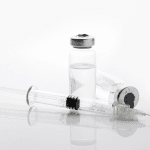Lisa, a vivacious middle-aged woman, highly valued her energetic lifestyle, encompassing mountain hiking and friendly tennis games. Over time, she started noticing persistent knee discomfort, hampering her active pursuits. This led her to contemplate viscosupplementation, a developing therapy for knee osteoarthritis, as a hopeful solution.
Knee osteoarthritis is a widespread, crippling joint ailment with millions of worldwide victims. The condition involves slow erosion of the knee’s cartilage, causing pain, reduced mobility and stiffness. Often, people affected by this disorder resort to diverse treatment strategies for easing the pain and reviving joint functionality.
Viscosupplementation constitutes the injection of a gel-like fluid, referred to as hyaluronic acid, into the knee joint. The process alleviates pain, curbs inflammation, and enhances joint lubrication. Among the options for treatment, Euflexxa and Synvisc are two of the most popular and commonly prescribed brands. Both have distinctive benefits which leaves Lisa with a choice to make: Which one would be more suitable for her?
This article delves into a comparison of Euflexxa and Synvisc, focusing on their effectiveness, safety ratings, relief duration, and patient feedback.
Understanding Euflexxa and Synvisc
Synvisc
Synvisc is a recognized medicinal solution for knee osteoarthritis. It is categorized as a viscosupplement or hyaluronic acid injection. These injections alleviate knee osteoarthritis symptoms by providing additional cushioning and lubrication to the affected joint.
The primary ingredient in Synvisc is hyaluronic acid, a naturally occurring substance in the synovial fluid, which aids in joint lubrication. Hyaluronic acid functions by absorbing shock, reducing friction, and providing joint cushioning.
Synvisc derives its ingredients from rooster combs, a high-hyaluronic acid-rich, crown-like structure atop a rooster’s head. Its manufacture involves extracting the hyaluronic acid from these combs, purifying it, and sterilizing it for medical purposes.
Euflexxa, on the other hand, is an alternative hyaluronic acid injection for treating knee osteoarthritis. Similar to Synvisc, it’s a viscosupplement targeted at reducing pain and improving joint function in affected patients.
The hyaluronic acid in Euflexxa, unlike Synvisc, is not derived from animals. Instead, it’s produced through a regulated biotechnology process involving the fermentation of genetically altered bacteria to manufacture hyaluronic acid. The resulting substance is meticulously purified and processed into Euflexxa. This method ensures consistent quality and composition of the hyaluronic acid utilized in the product.
Euflexxa’s Source
Euflexxa originates from a biological avian base known as avian rooster combs. It’s a highly purified form of hyaluronic acid naturally found in the body’s synovial fluid, helping to alleviate knee osteoarthritis-related pain.
Selecting the most suitable treatment between EUFLEXXA and SYNVISC can be a complex decision. Hence, it’s important to understand their effectiveness.
Effectiveness
The FLEXX trial confirmed the effectiveness of Euflexxa (IA-BioHA) for treating knee osteoarthritis. This rigorously designed study included random, double-blinded comparisons between Euflexxa and a placebo group using saline. The results indicated significant pain relief and improvement in joint function over 26 weeks with Euflexxa. Patients receiving Euflexxa reported a median pain reduction of 53%, compared to 38% in the control group.
On top of the primary evaluation, secondary assessments conducted during the trial emphasized the benefits of Euflexxa. These assessments included measures of improvements in the Osteoarthritis Research Society International responder index and health-related quality of life. Remarkably, the treatment showed excellent tolerability with very few adverse events reported by the participants. These trial outcomes affirm that Euflexxa is a safe and promising choice for those dealing with knee osteoarthritis, providing pain relief, and quality of life improvement.
Meanwhile Synvisc has been studied extensively in numerous trials, where it was compared to different control groups including intra-articular saline, intra-articular steroids, nonsteroidal anti-inflammatory drugs (NSAIDs) and ordinary care. Notably, in two random, placebo-controlled studies comparing Synvisc to intra-articular saline, significant improvements were observed with Synvisc in critical outcomes such as weight-bearing pain and activity-related pain over both 12 and 26 week periods.
Additionally, an evaluator-blinded, multicenter study reported that Synvisc provided more enduring effectiveness in pain reduction and overall condition improvement when compared to intra-articular steroid treatments at the 26-week point. Synvisc was also compared to prolonged NSAID use in two multicenter studies. While one study reported similar effectiveness between the two treatments, the other suggested Synvisc might provide greater effectiveness.
Safety
While evaluating treatments for knee osteoarthritis with Euflexxa and Synvisc, safety must be a top concern. Both treatments are generally well-tolerated, but possible side effects associated with both injections should be noted.
Common Side Effects:
- Slight pain, swelling, redness and heat at the injection site
Rare or Severe Side Effects:
- Mild skin irritation, infection, and joint effusion
Other Uncommon Side Effects:
- Very rare instances may include temporary increment in joint pain, stiffness or heat
Duration of Results
Responses to these treatments can vary, however generally, both Euflexxa and Synvisc provide long-lasting pain relief and improved joint functionality.
Euflexxa: It usually offers several months of relief, often extending to six months or more. The duration depends on factors such as osteoarthritis severity and individual response.
Synvisc: Synvisc provides significant relief that can last from one to six months or longer. The duration varies among patients based on the severity of their condition and their response.
Remember, regular injections may be required to sustain the relief.
Cost
When comparing Euflexxa and Synvisc, cost often plays a significant role in patient decision-making:
Euflexxa: The cost can vary based on the required number of injections and the patient’s insurance coverage. A typical full treatment series includes three injections over several weeks. The cost for a single injection typically ranges from $477 to $1,321. Patients are advised to confirm insurance coverage and consider any additional healthcare provider charges.
Synvisc: Cost determinants include the number of injections required and the type of insurance coverage. A full Synvisc treatment usually involves three injections over several weeks. The average price for one syringe of 6ml, 48mg/6ml, can go up to around $1,600.
Some clinics import these injections from other countries to lower the total cost.
Patients should co-operate closely with their healthcare providers and insurers to make informed decisions. Exploring financial assistance and payment options can aid in effectively managing treatment costs.
Which is Better?
When it comes to a head-to-head comparison between Synvisc and Euflexxa, it’s key to recognize that both are hyaluronic acid viscosupplements used for treating knee osteoarthritis. Healthcare professionals, like rheumatologists or orthopedic surgeons, generally administer these injections into the knee joint. Both treatments work by enhancing the naturally occurring hyaluronic acid critical for joint lubrication.
While there might be a limited number of direct comparative studies between Synvisc and Euflexxa, various resources offer insight into their effectiveness and detailed characteristics.
Synvisc (Hylan G-F 20), an injection fluid made up of Hylan A and Hylan B polymers and derived from rooster combs, or avian-derived hyaluronic acid (AV-HA). Research comparing Synvisc to intra-articular saline points to statistically significant advancements in pain relief and overall condition improvement. It also indicates enhancements in outcomes such as weight-bearing and activity-related pain.
Euflexxa (IA-BioHA) has shown significant pain relief and functional improvement in the FLEXX trial. The study demonstrated a substantial reduction in pain and improved joint functionality over a 26-week period. Patients reported a median reduction in pain of 53%.
Note that the choice between Synvisc and Euflexxa may depend on patient preferences, individual patient characteristics, and input from healthcare professionals. Factors such as cost, insurance coverage, and treatment tolerance may also play a role.
A thorough consideration of the research and a detailed discussion with healthcare providers are required to determine the most suitable treatment for an individual’s unique needs and circumstances.






